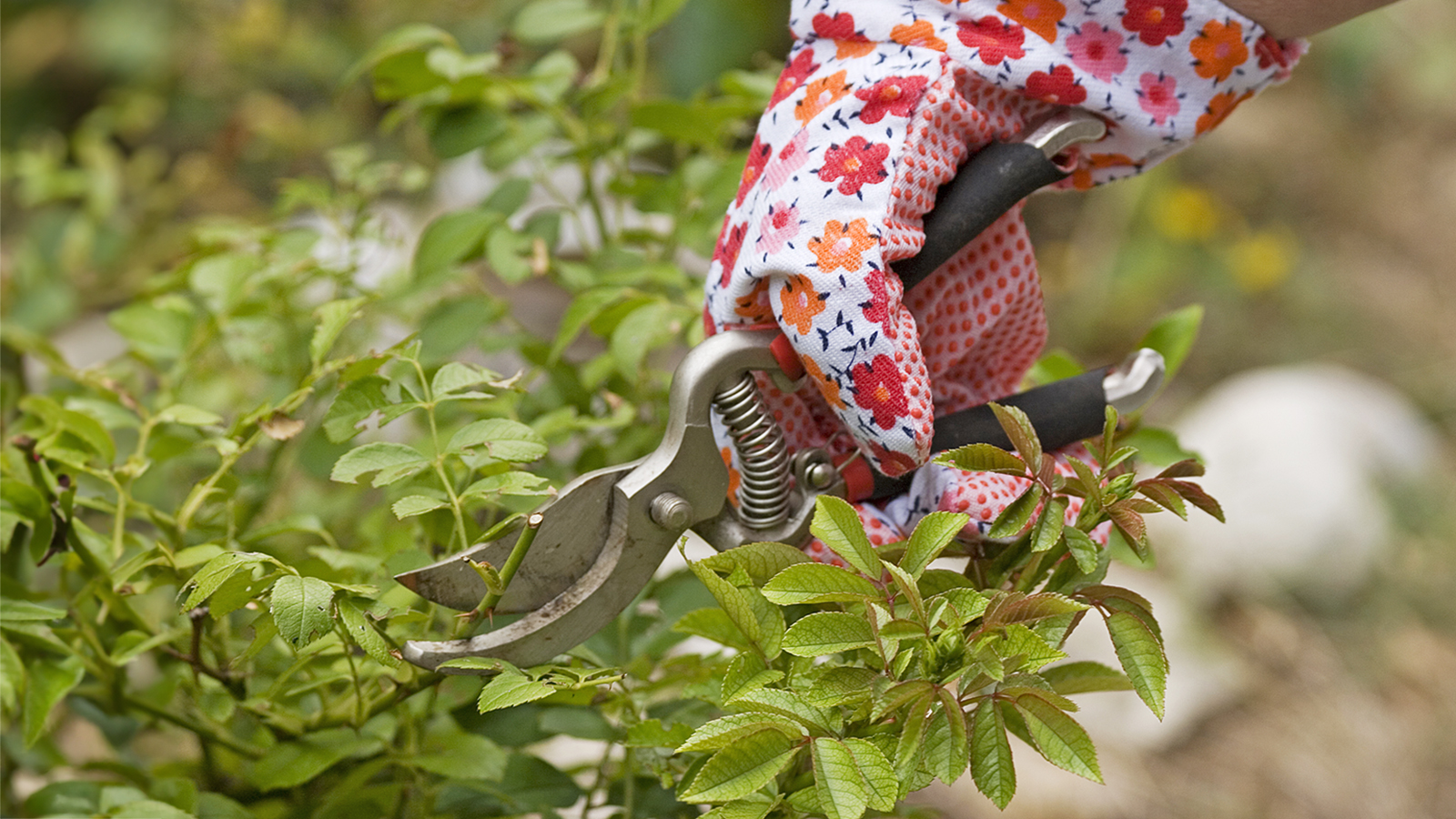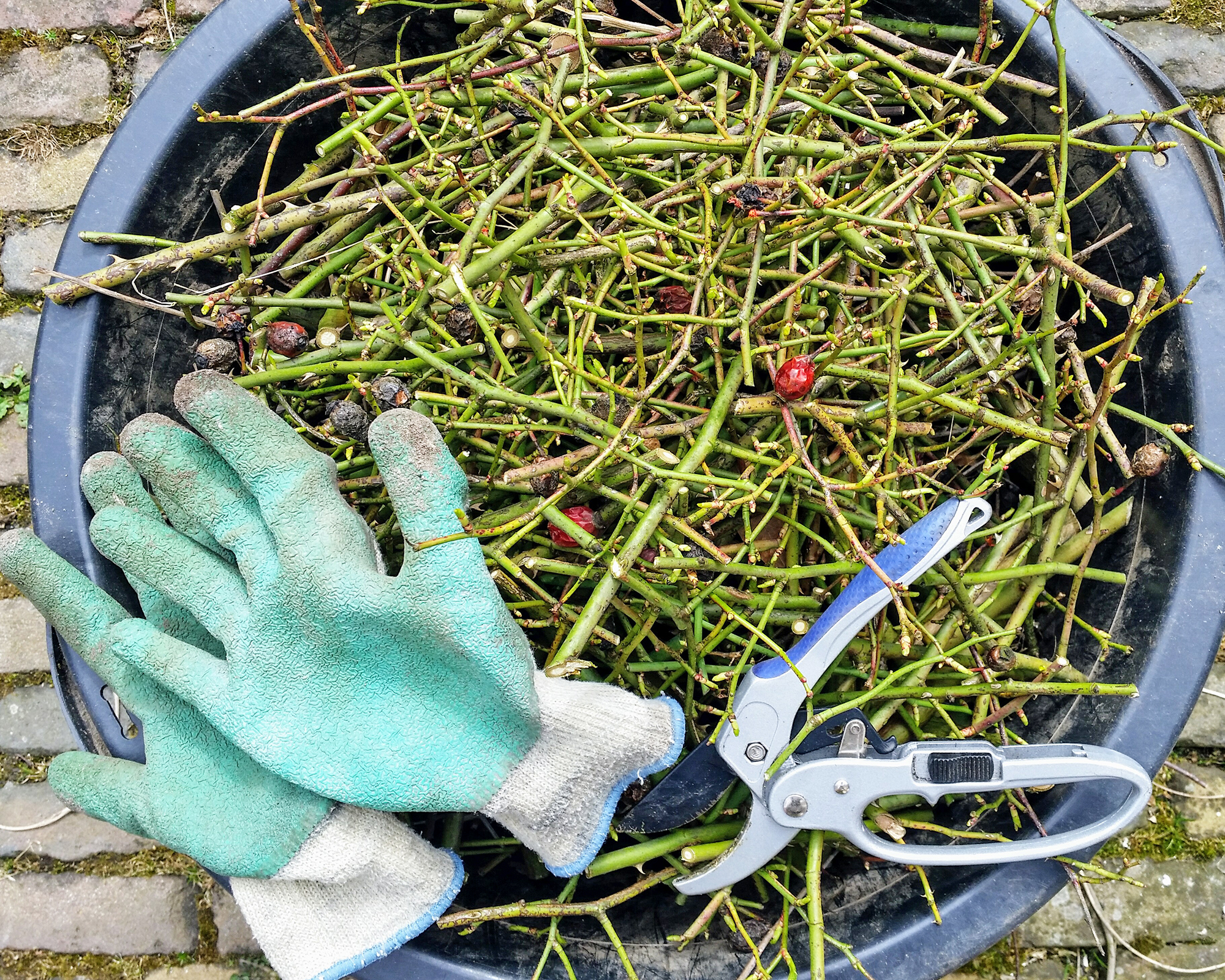How To Prune Roses: Expert Techniques For Magnificent Blooms All Season
Follow this step-by-step guide and learn the best pruning methods for stunning roses year after year.

Tonya Barnett
Few plants compare to roses in beauty and utility. These landscape favorites are versatile, with options for borders and containers, and climbing varieties that cover walls and arbors. Although roses have a reputation for being difficult to care for, they are extremely hardy when in the right situation. Learning how to prune roses is essential to keeping these fragrant beauties in good health and looking their best. If you can master pruning, everything else will fall into place.
When learning how to grow roses, the main goal for most growers is to maximize blooms. Routine pruning not only keeps roses in good shape, it promotes growth and stimulates the production of flowers. In addition, it helps to manage common rose diseases and even rose pests. This guide serves to explore how to trim rose bushes in greater detail, taking note of timing and minor differences between types.
When to Prune Roses
Opinions about when to prune roses differ, with experienced growers citing both spring and fall as the best times to trim plants. However, extensive pruning should occur only while plants are dormant, just before or after periods of active growth. For most roses, this is in late winter or early spring. Look for signs of new life – as soon as the leaf buds start forming, it's time to prune.
However, there are exceptions to this timetable, the most notable being rambling roses, which should be pruned after flowering in the summer.
Whether you should cut roses back in the fall depends on their growth rate and the risk of harsh weather. Taller rose bushes can benefit from being trimmed back to about half their height at this time, to protect them from winter winds and heavy snows, which could whip the canes around or snap them.
Avoid more aggressive pruning which will encourage a burst of tender growth that may be damaged when the colder weather sets in.

How to Prune Roses – Step by Step
Pruning roses properly is relatively simple when dealing with shrubs. However, learning how to prune climbing roses is a slightly different art, so you need to follow specific guidance for both climbers and ramblers. Rose trees also have further needs to ensure the best possible shape. But, to prune any shrub rose, follow this step-by-step guide.
Sign up for the Gardening Know How newsletter today and receive a free copy of our e-book "How to Grow Delicious Tomatoes".
1. Gather Your Tools
First, you will need to gather the required tools to perform the job well. This will include bypass hand pruners, and a clean pair of garden loppers or secateurs. A small handsaw may be required for tackling hard, thick branches. Make sure you sterilize pruning tools before starting and when moving between each plant to avoid passing disease spores.
You will also need a good pair of gardening gloves – ideally gauntlet-style gloves that cover the lower arms – to avoid cuts that can lead to a rose picker's disease.
2. Remove Problem Stems
Inspect the plant to be pruned, taking special note of any stems that may have died back or been damaged by cold through winter, as well as any diseased branches. These branches can be cut carefully away at the base of the plant.
Check the shrub for rose suckers, which are vigorous stems that grow from the rootstock of grafted roses. They may look like promising new growth, but they are not the same variety as the flowers on top and they will draw energy from the plant. Remove suckers at the soil line.
Problem stems also include weak, spindly canes, as they will be unable to support the weight of flowers. Take them back to the parent branch or base. Many experts suggest removing stems thinner than a pencil, but some roses have finer stems than others, so if this means removing most of the plant, then prune more conservatively.
Also check for crossed branches and areas of congestion, as they will rub and cause wounds. You need to select the best branches to keep and remove those that are competing for the same space.

2. Determine the Height
Deciding the right height to cut rose bushes back to can be difficult, and depends on the age and success of the shrub, and how vigorous it is.
Roses planted the previous year should only be lightly trimmed, to allow them to become more established. For more mature roses, you should aim to reduce the height by between a third and a half.
This can increase to up to two thirds where the rose is very vigorous, the plant has suffered high levels of cane die-back from a harsh winter, or it needs renovating. Gardeners in colder zones usually find roses need harder pruning than those in warmer zones.
Once you have determined the overall height the rose should be, it's helpful to push a stick or bamboo cane into the ground to use as a cutting guide.
4. Prune to Shape
Each remaining stem can now be trimmed to shape and form the structure of the shrub. Try to aim for a nice rounded shape, with the outer canes slightly shorter than the middle.
When pruning roses, make concise cuts at around a 45-degree angle away from the nearest healthy bud. This technique increases the surface area of the stem, enabling the flower to absorb more water and stay fresh longer. Too steep a cut will provide a weak base for the new growth, so a slight angle is best. If you are finding it difficult to cut through especially hard, thick canes with pruners, switch to a handsaw.
Where possible, cut around a ¼ inch (0.5cm) above an outward-facing leaf bud. The leaf buds can be found where an old multiple-leaf junction to the cane formed last season. However, you don't need to be a perfectionist about this, as the overall shape is more important.
Regardless of the needed pruning, rose bushes seem to take it all in their stride. The new growth comes forth strong and proud, and before you know it they have regained their height, beautiful foliage, and amazing blooms.
5. Tidy Up
When pruning roses, try to keep hold of stems as you cut them and then dispose of them in garden waste, rather than letting them drop into the soil. Inevitably there will be some debris, and it's important to clean this away to avoid the transference of soil- and water-borne diseases such as black spot.
As roses are more disease-prone than other plants, you should not compost the plant material.
While clearing up, you should also weed around the rose to remove competition for nutrients and to clear the path for the next step.

6. Feed and Mulch
It's good practice to fertilize roses right after pruning them in the spring, to set them up for a long season of good, healthy growth. Use a product specially formulated for roses, and add a cup or two of alfalfa meal to boost blooming, and half a cup of Epsom salts to add magnesium and improve nutrient uptake.
After fertilizing, apply a layer of mulch to further enrich the soil with nutrients, improve water retention, and keep down weeds. The best mulch for roses is a natural product such as shredded bark mulch, wood chip mulch, or compost.
Finish by watering roses thoroughly.

Do I Need to Seal Roses After Cutting?
Sealing cut rose canes is an optional extra step for gardeners in areas where rose cane borers are problematic. The vulnerable exposed soft wood provides an easy entry point for these harmful pests. In some cases, a boring insect can bore down far enough to kill the entire cane and sometimes the rose bush.
Using Elmer's glue – not school glue, which washes off quickly in the rain – seal the ends of all canes 3/16 of an inch (0.5cm) in diameter and larger. The glue forms a barrier that helps prevent cane-boring insects from boring into the canes and causing damage to them.
Should I Prune Roses in Extreme Heat?
Early spring and fall are among the best times for gardeners to begin pruning their roses. Growers should generally aim to avoid pruning roses in summer, more specifically, when temperatures are high. There are some exceptions, however, as trimming relates to deadheading or the removal of damaged or diseased canes.
Should pruning prove necessary, gardeners should seek to prevent stress as best possible, cutting only when conditions are cool and watering shrubs well until new cuts have healed completely.
More Roses Inspiration
- Browse expert-curated plants in the Gardening Know How Shop – from show-stopping roses to native evergreens.
- Add old-fashioned charm to borders with the best romantic old garden roses to grow for a dreamy display.
- Learn how to plant bare root roses like a pro with these simple steps for lasting beauty.
- Discover how to save a rose and restore shrubs to their former glory with 8 fixes for failing shrubs.

Stan V. Griep contributed to Gardening Know How for many years and has been a Colorado Native Rosarian for over four decades. He is an American Rose Society Certified Consulting Master Rosarian in the Rocky Mountain District, and a member of the Denver Rose Society, the Loveland Rose Society, and the American Rose Society. He is Gardening Know How's in-house expert on all things roses.
- Tonya BarnettWriter



